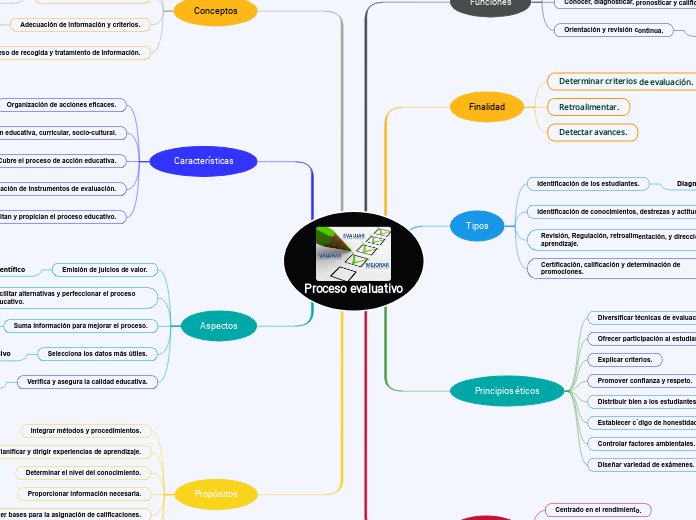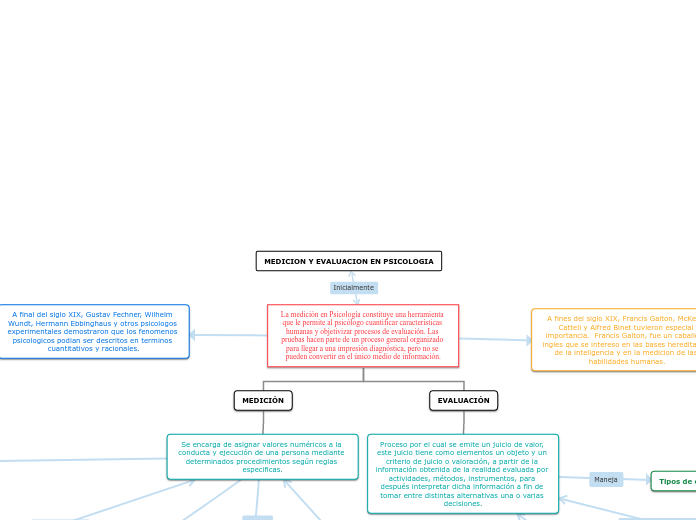Proceso evaluativo
The Solar System is the gravitationally bound system of the Sun and the objects that orbit it, either directly or indirectly. Of the objects that orbit the Sun directly, the largest are the eight planets, with the remainder being smaller objects, the dwarf planets, and small Solar System bodies.
Propósitos
Saturn is known most for its rings.
Galileo Galilei first thought it was an object with three parts: a planet and two large moons on either side.
Not knowing he was seeing a planet with rings, the stumped astronomer entered a small drawing — a symbol with one large circle and two smaller ones — in his notebook.
The rings are made of ice and rock and scientists are not yet sure how they formed. The gaseous planet is mostly hydrogen and helium.
Estimular la efectividad de las estrategias.
Valorar la pertinencia de los contenidos.
Establecer bases para la asignación de calificaciones.
Proporcionar información necesaria.
Saturn has over 150 moons and satellites. However, of these vast numbers of moons, only 62 are known and confirmed as moons.
Name at least 5 of these moons.
Determinar el nivel del conocimiento.
How long does it take for Saturn to go around the sun?
Planificar y dirigir experiencias de aprendizaje.
A planet's day is the time it takes the planet to rotate or spin once on its axis.
Write down Saturn's day measured in Earth days.
Integrar métodos y procedimientos.
Aspectos
Uranus is an oddball. It has clouds made of hydrogen sulfide, the same chemical that makes rotten eggs smell so foul.
It rotates from east to west like Venus. Its tilt causes extreme seasons that last 20-plus years, and the sun beats down on one pole or the other for 84 Earth-years at a time.
Methane in the atmosphere gives Uranus its blue-green tint. It also has 13 sets of faint rings.
Verifica y asegura la calidad educativa.
Meta evaluación
Selecciona los datos más útiles.
Uranus has 27 moons that we know of. Five of the moons are large and the rest are much smaller.
Name these 5 moons.
Carácter comprensivo
Suma información para mejorar el proceso.
How long does it take for Uranus to go around the sun?
Carácter sumativo
Facilitar alternativas y perfeccionar el proceso educativo.
A planet's day is the time it takes the planet to rotate or spin once on its axis.
Write down Uranus's day measured in Earth days.
Carácter formativo
Emisión de juicios de valor.
Carácter científico
Características
Neptune is about the size of Uranus and is known for supersonic strong winds.
Neptune is far out and cold.
The planet is more than 30 times as far from the sun as Earth.
Neptune was the first planet predicted to exist by using math, before it was visually detected. Neptune is about 17 times as massive as Earth and has a rocky core.
Facilitan y propician el proceso educativo.
Decisoria
Variación de instrumentos de evaluación.
Neptune has thirteen moons that we know of and one more waiting for confirmation.
The largest moon is slightly smaller than Earth's Moon and has active volcanoes which erupt like geysers and eject nitrogen frost over the surface.
Name this moon and at least 4 others.
Flexible
Cubre el proceso de acción educativa.
How long does it take for Neptune to go around the sun?
Continua
Información educativa, curricular, socio-cultural.
A planet's day is the time it takes the planet to rotate or spin once on its axis.
Write down Neptune's day measured in Earth days.
Integral
Organización de acciones eficaces.
Sistemática
Conceptos
It was once considered a planet but in August 2006 the International Astronomical Union (IAU) downgraded the status of Pluto to that of “dwarf planet.”
Pluto is unlike other planets in many respects. It is smaller than Earth's moon; its orbit is highly elliptical.
It's a cold, rocky world with a tenuous atmosphere. Pluto is a very active ice world that's covered in glaciers, mountains of ice water, icy dunes, and possibly even cryovolcanoes that erupt icy lava made of water, methane or ammonia.
Proceso de recogida y tratamiento de información.
The dwarf planet Pluto has five moons.
Name these moons.
UNESCO
Adecuación de información y criterios.
A planet's day is the time it takes the planet to rotate or spin once on its axis.
Write down Pluto's day measured in Earth days.
Ketele
Ponderar resultados previstos.
How long does it take for Pluto to go around the sun?
Pedro Lafourcade
Delinear, obtener y proveer información.
Daniel Stuffebeam
Modelos
Mars is a cold, desert-like place covered in dust. This dust is made of iron oxides, giving the planet its iconic red hue.
Mars shares similarities with Earth: It is rocky, has mountains, valleys and canyons, and storm systems ranging from localized tornado-like dust devils to planet-engulfing dust storms.
Centrado en el diagnóstico.
How long does it take for Mars to go around the sun?
Centrado en el cumplimiento.
A planet's day is the time it takes the planet to rotate or spin once on its axis.
Write down Mars's day measured in Earth days.
Centrado en el rendimiento.
Principios éticos
Diseñar variedad de exámenes.
Controlar factores ambientales.
Establecer c´digo de honestidad académica.
Distribuir bien a los estudiantes.
Promover confianza y respeto.
Explicar criterios.
Ofrecer participación al estudiante.
Diversificar técnicas de evaluación.
Tipos
Earth is a water world, with two-thirds of the planet covered by oceans.
It's the only world known to harbor life.
Earth's atmosphere is rich in nitrogen and oxygen.
Its name originates from 'Die Erde,' the German word for 'the ground.'
Earth may once have had two moons, nowadays it has just one.
Certificación, calificación y determinación de promociones.
Sumativa
Revisión, Regulación, retroalimentación, y dirección el aprendizaje.
How long does it take for Earth to go around the sun?
Formativa
Identificación de conocimientos, destrezas y actitudes.
A planet's day is the time it takes the planet to rotate or spin once on its axis.
Write down the Earth's day in hours.
De ubicacción
Identificación de los estudiantes.
Diagnóstica
Finalidad
Venus is Earth's twin in size and has no moons.
Its surface has various mountains and volcanoes. Because of its thick, toxic atmosphere that's made of sulfuric acid clouds, Venus is an extreme example of the greenhouse effect. The average temperature on Venus' surface is 900 F (465 C).
Venus spins slowly from east to west, the opposite direction to most of the other planets.
The Greeks believed Venus was two different objects — one in the morning sky and another in the evening. Because it is often brighter than any other object in the sky, Venus has generated many UFO reports.
Detectar avances.
How long does it take for Venus to go around the sun?
Retroalimentar.
A planet's day is the time it takes the planet to rotate or spin once on its axis.
Write down Venus's day measured in Earth days.
Determinar criterios de evaluación.
Funciones
Mercury is the smallest, only a little bit larger than Earth's moon. Mercury has no moon.
It experiences dramatic changes in its day and night temperatures: Day temperatures can reach a scorching 840 F (450 C), which is hot enough to melt lead. Meanwhile, on the night side, temperatures drop to minus 290 F (minus 180 C).
It also has a very thin atmosphere of oxygen, sodium, hydrogen, helium, and potassium and can't break-up incoming meteors, so its surface is pockmarked with craters, just like the moon.
Orientación y revisión continua.
How long does it take for Mercury to go around the sun?
Como recurso
Conocer, diagnosticar, pronosticar y calificar.
A planet's day is the time it takes the planet to rotate or spin once on its axis.
Write down Mercury's day measured in Earth days.
Para el maestro
Informativa, orientadora, motivadora.
Our Solar System has eight “official” planets which orbit the Sun.
Each planet is at a different distance from the sun. Name its position.
Para el estudiante









